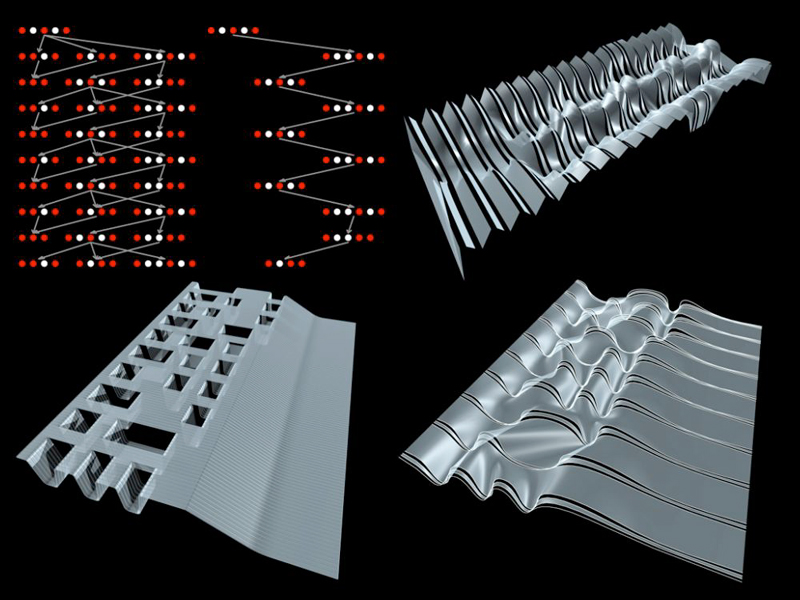
9. Strange Organizations
The "autonomous morphogenesis" here, to use one of Jacques Monod's criteria for strange objects, has first to do with organizational information that will form the logical, and sometimes spatial, framework for later formation of architectural objects. More specifically, this information is self-organizing to the extent that it is unpredictable but nonetheless immanent. In other words, once a system is set in motion with initial conditions like an array of cells and rules for the behavior of those cells the system will produce and reproduce the same outcome. This is one form of "invariant reproduction", to use another of Monod's criteria. In fact, there is invariance at both the level of the enactment of rules for reproduction by individual cells and the level of the overall field of generative organization that is produced by the cells over time. While it would not be accurate to claim that these small studies are truly strange objects because they require the design of rules, these studies are interested in evolutionary principles such as the accumulation of small changes over time. Specifically, the interest is in an accumulation driven by parts that, like genes, have no ability to forecast or predict the kinds of objects that will emerge from them.